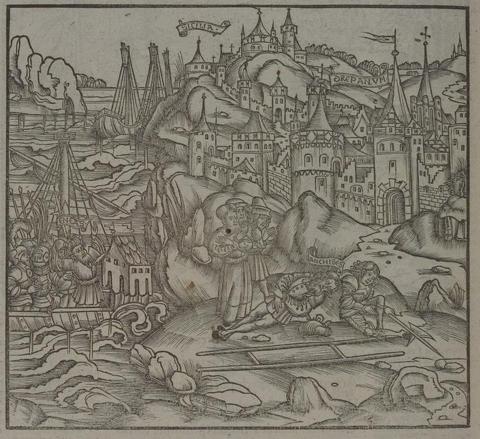Annotations
At the harbor of Drepanum in Sicily, Anchises lies dying with a stretcher laid out next to him (707-11). The turban-like hat that he usually wears in Brant's illustrations lies beside him Four attendants surround him, one kneeling while the others stand in various postures of grief. On the left, Aeneas, still on his ship, stands with his hands raised either in prayer or in lamentation. (Katy Purington)
Woodcut illustration from the “Strasbourg Vergil,” edited by Sebastian Brant: Publii Virgilii Maronis Opera cum quinque vulgatis commentariis expolitissimisque figuris atque imaginibus nuper per Sebastianum Brant superadditis (Strasbourg: Johannis Grieninger, 1502), fol. 206v, executed by an anonymous engraver under the direction of Brant.
Online Resources
Associated Passages
License
Creative Commons Attribution-NonCommercial-ShareAlike
Properties
Agent
Date
1502
Culture
Medium
Location
University of Heidelberg
Image Credit


Sebastian Brant (1458–1521) was a humanist scholar of many competencies. Trained in classics and law at the University of Basel, Brant later lectured in jurisprudence there and practiced law in his native city of Strasbourg. While his satirical poem Das Narrenschiff won him considerable standing as a writer, his role in the transmission of Virgil to the Renaissance was at least as important. In 1502 he and Strasbourg printer Johannes Grüninger produced a major edition of Virgil’s works, along with Donatus’ Life and the commentaries of Servius, Landino, and Calderini, with more than two hundred woodcut illustrations. (Annabel Patterson)